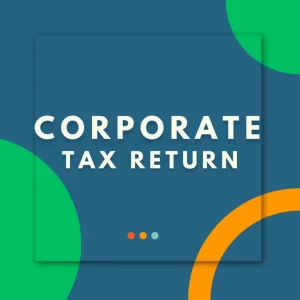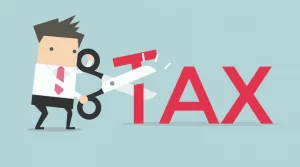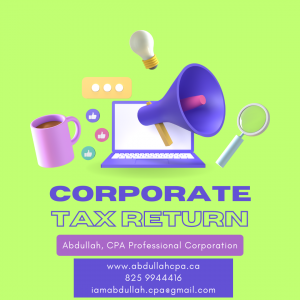If you’re an internationally-trained medical graduate arriving in Canada — welcome! Also a Tax Guide for Medical Residents in Canada. While unpacking boxes, setting up your practice, and finding a place to live will be highest on your “to-do” list, learning at least the basics of the Canadian tax system can lead to big tax savings — freeing up extra money that will be especially welcome during that expensive settling-in period — so make it a priority!
Don’t be intimidated — our system of taxation is designed to be both clear and fair. Under the The Canada Revenue Agency (CRA)’s Taxpayer Bill of Rights, you have the right to receive all the credits and deductions you’re entitled to, to pay no more than what is required by law, and to arrange your affairs (within the law, of course) to maximize your tax savings.
So let’s get started!
How does income tax work in Canada?
The CRA oversees and regulates Canada’s tax system and relies on taxpayers to self-report their income by completing and submitting yearly returns — meaning you are responsible for reporting your earnings and calculating and paying your taxes each year.
The Canadian income tax system is progressive: income is taxed at higher rates (proportionally) as you reach higher income levels. An income band, such as $10,000 – $15,000, is called a tax bracket: the higher your tax bracket, the more you pay.
Each Canadian province and territory sets their own taxes, which must be paid in addition to federal tax rates, but — unless you are a Quebec resident, in which case you will file two separate returns — most people file a single return, because the CRA also collects taxes on behalf of provinces and territories.
Municipalities — cities and towns — also set and collect taxes, but they don’t do it through your tax returns; check your municipal website to learn what you’ll have to pay, when it’s due, and how it’s collected. In some cases you can claim (use as a deduction or a tax credit, two terms we’ll explore very shortly) municipal taxes against provincial or federal taxes.
In return, tax dollars fund social programs and benefits such as Old Age Security and the Canada Child Benefit, infrastructure development — like sidewalks, roads and bridges — health care and education, water and garbage pickup, and most other services we take for granted.
Who is required to file an income tax return in Canada?
The CRA does not require citizens, residents, or visitors working in Canada to file an annual tax return by default, but you must file one if you owe tax, or if you’re self-employed and need to pay Canada Pension Plan (CPP) or Employment Insurance (EI) premiums. You must also file to receive a refund, or certain federal or provincial benefits. So it’s in your best interest to file each year.
According to the CRA you are Canadian for income tax purposes when you establish “significant residential ties” in Canada. This includes having a home in Canada, a spouse or common-law partner in Canada, or dependents in Canada.
If you have not established significant residential ties with Canada, but you did stay in Canada for 183 or more days in the year, you may be considered a deemed resident.
When, where and how do I file a tax return?
Before you file, you must have applied for and received your Social Insurance Number (SIN), as it’s used to identify you for income tax and benefits.
For most individuals, the deadline to file a return is April 30th each year. During the pandemic, this deadline has been extended.
For self-employed individuals, the deadline is June 15th.
For corporations, the filing deadline depends on when your fiscal year ends.
April 30th is also the deadline to pay your taxes for the previous year, if you owed more than you were able to pay all at once when you filed.
You can file your return after April 30th without incurring a penalty if you expect to receive a refund or to “break even”, neither owing nor being owed for the year. Late tax filers who still owe tax for the year will be charged a penalty of 5% on the taxes owed, plus an additional 1% penalty for each late month for up to 12 months.
However, taxpayers who find after they’ve filed that they’ve made an error and owe more than they paid can make a voluntary disclosure, which will generally mean they don’t have to worry about penalties or prosecution, and may even mean they’re not required to pay interest.
You can file your taxes inexpensively, or even for free, by using one of several tax software providers in Canada. New Canadians typically have options to electronically file their tax return, but in some cases you’ll have to print out, fill in, and mail your first return.
In subsequent years, you’ll be able to file your income tax returns electronically.
Many Canadian taxpayers prepare and file their own returns, but more complicated returns may require assistance from a tax preparer or accountant.
Federal and provincial, rates and brackets, credits and deductions: how does income tax in Canada work?
In a nutshell, the more you earn, the more you pay. That’s how a progressive tax system works. Exactly how much more depends on your federal and provincial or territorial tax brackets, and on your available deductions and credits. Let’s get into the details!
Income tax brackets
As your income rises so does the percentage you’re taxed on it — but you don’t pay a higher percentage on your full income. Instead, your income is divided into tax brackets and you pay the tax rate for each bracket only on the income that falls into that range. Sounds complicated? It’s simpler than it looks.
Let’s say you earned $100,000.
Let’s also say that that the federal tax brackets you fall into are 5%, 10%, 15% and 20%. (All of the numbers in these examples are invented).
So your brackets are:
5% on $0-25,000. You owe $1250 on your first $25,000.
10% on $25,000-$50,000. You owe $2500 on your second $25,000.
15% on $50,000 – $75,000. You owe $3750 on your third $25,000.
20% on $75,000-$100,000. You owe $5000 on your fourth $25,000.
You owe $12,500 in federal taxes on your total of $100,000.
Provincial and territorial tax brackets
The federal government has their tax brackets: the provinces and territories have separate taxes and brackets, but they work similarly. If we use the same brackets provincially as we did federally (again, these numbers are all invented), you will owe $12,500 in provincial taxes as well as $12,500 on your income of $100,000.
So now your total taxes owing on $100,000 are $25,000.
Average tax rate
Your average tax rate is determined by dividing the total taxes owing by the total taxable income. In this example, 25,000 ÷ 100.000 = 25%.
Marginal tax rate
Your marginal tax rate is the tax rate paid on your last dollar of earned income. It’s calculated by taking the highest federal tax bracket for a given taxpayer and adding the highest provincial tax bracket.
20% + 20% = 40%.
So, anything that reduces your taxable income will also reduce your marginal rate. And that’s where deductions come in.
Tax deductions vs. tax credits: What’s the difference?
Canadian taxpayers can reduce the amount of tax they owe by taking advantage of tax credits and tax deductions.
A tax deduction is when you are allowed to apply money you have spent for certain purposes against your taxable income — if you earn $50,000 in a year but have $10,000 in deductions, your income for tax purposes is $40,000 — which in turn reduces your tax bracket and your average and marginal rates.
A tax credit may be a refund for money you’ve actually spent, such as a charitable donation, or it may be an estimate of what you have spent based on your overall income and expenditures, such as the goods and services tax (GST) credit.
Credits reduce your taxes owing after they are calculated — so if based on your taxable income after deductions you owe $10,000 in taxes but have a $1000 tax credit, you will owe $9000 in taxes.
Credits are either non-refundable, meaning they can only be applied against tax payable, or refundable.
Tax Guide for Medical residents in Canada
How does that work? Give me another example, please!
Let’s say that since our last example you’ve gotten a very large raise, and your gross income is now $125,000.
Let’s also say that the rate on the tax bracket $100,00-$125,000 is, both federally and provincially, 25%.
So you owe $12,500 ($6250 + $6250) on that $25,000 and $37,500 (the $25,000 we arrived at earlier + $12,500) on your total income of $125,000.
Your average tax rate is now 30% and your marginal rate is now 50%. Ouch! This is where deductions come into play.
Let’s say that you have $25,000 in deductions: now your taxable income is back down to $100,000. This reduces your average rate from 30% to 20% and your marginal rate from 50% to 40%.
You once again owe $25,000 in taxes.
You have a non-refundable tax credit worth $35,000: once you apply that, you owe no taxes, but CRA does not owe you any money either: the remaining $10,000 goes unused.
However, you also have a refundable tax credit worth $15,000: the CRA owes you a $15,000 refund, and you get a cheque in the mail.
Every Canadian resident is entitled to claim a non-refundable credit called the basic personal amount on their tax return. The basic personal amount for 2022 is $14,398, which means you essentially won’t pay any federal tax on the first $14,398 in earnings.
Provinces and territories also offer a basic personal amount.
There are more than 400 tax deductions and credits available for Canadian taxpayers. Canadian physicians may be able to deduct expenses such as automobile, annual membership fees, start-up costs and fees for acquiring a new practice, overhead fees, salaries and contract fees, and other miscellaneous expenses.
If you choose to incorporate your practice, there are even more deductions and credits available to you — including the fee you pay your tax-preparer to ensure you take advantage of them all!
What’s more, many deductions and credits can be carried forward — meaning that if you don’t need all of the deductions and non-refundable credits available to you in a given tax year, which is quite common if your income is modest as you get established in Canada, you can use them another year, when your income is higher.
Okay, but it’s a lot more complicated with the real numbers, right?
It’s actually not! Plus, all the numbers you need to know and all the calculations you’ll need to do are laid out for you on your return, as you can see on this example from 2021.
What’s more, when you download your return from the CRA website, they will ask you to select your province or territory, and ensure that you download a return with the correct provincial rates, as well as with spaces for relevant provincial deductions and credits. You just enter your own figures in the space provided and do the calculations given. Tax Guide for Medical residents in Canada Tax Guide for Medical residents in Canada
Tax Guide for Medical residents in Canada
Ok, but … I thought this was about taxes. So why does everyone keep talking about savings and retirement?
Because saving money for your future can save you money on your taxes — a lot of money! Like those of many other countries, the Canadian tax system is set up to incentivize taxpayers to set aside savings, especially savings towards retirement.
Because of this, one of the most common and valuable deductions available to you is money you contribute to a registered retirement savings plan (RRSP). You pay no taxes on any earnings you deposit in your RRSP, and you can deposit a lot — up to 18% of your income from the previous year. So, once you’ve filed your first Canadian return, you start to accumulate contribution room — the term we use to describe the maximum amount of money you can pay no taxes on by transferring it to your RRSP in any one year.
What’s more, if you can’t afford to contribute the full amount in a year, the room doesn’t go away! You can carry that amount forward and use it another year, when your income is higher.
Tax Guide for Medical residents in Canada
How does that work?
Ok, let’s say that you made $100,000 last year, and you filed a tax return in Canada, so this year you have $18,000 of contribution room.
You do not, however, have $18,000, at least not to spare. You contribute $8,000 to your RRSP. The other $10,000 is carried over.
You do the same thing for the next four years: contribute $8,000, carry $10,000 forward.
In the sixth year, you finally opened your own practice, and it’s going incredibly well. You made $250,000 that year.
You are going to owe a lot of taxes on that. And because your income rise was sudden, you only have 18% of last year’s income — another $18,000 — in RRSP contribution room.
Except you’ve carried forward all that unused room, so you actually have $18,000 + $50,000 in contribution room.
You contribute the maximum allowable amount, $68,000, to your RRSP, and not only will that $68,000 grow into more and be there when you want it on your retirement, but your taxable income for last year is no longer $250,000 — it is $182,000.
With an RRSP you pay no taxes on your contributions, but will be taxed on the money you withdraw, years from now, so it’s most advantageous if you contribute when your income is high and withdraw when it’s lower.
If your income is low now but you expect it to rise, you may be better off with a tax-free-savings account (TFSA). Money you pay into a TFSA is taxed, so it doesn’t affect your tax situation now — but withdrawals are tax-free, which can make a big difference when you want to use that money later. As with RRSPs, TFSAs have yearly contribution limits based on your previous return.
Tax Guide Medical Residents in Canada
Tax planning for doctors in Canada
Learning to prepare your return, file it, and pay your taxes is a bit like learning to waltz — the actual steps are simple, and easily learned, but doing it really well takes a lot of practice. Fortunately, help is readily available.
The national average income for physicians in Canada is approximately $388,000, which is in the top federal tax bracket and at or near the top of each provincial tax bracket. At this income level, tax deductions and credits are extremely valuable and it would be wise to seek professional guidance to ensure you’re taking advantage of every credit and deduction available to you — again, you may even be able to deduct what you pay for their help! In the meantime, as a New Canadian with a simpler return, look for welcoming programs in your community offering assistance with filing your taxes as well as other help in navigating the Canadian system.
At some point, incorporating your practice may offer the best tax planning opportunities by allowing you to defer taxes on excess earnings rather than being taxed personally at the highest marginal tax rate. With a corporation, you can also choose to pay yourself a salary and continue to generate RRSP contribution room and pay into the Canada Pension Plan (CPP). Your salary is deductible as a business expense, but taxable to you individually.
Alternatively, you can pay yourself dividends which are taxed at a lower rate personally, but not deductible as a business expense. Income earned from dividends also does not generate RRSP contribution room, and you won’t be required to pay into CPP.
To discuss whether incorporating your practice is the right route for you, get the conversation started by contacting Abdullah CPA
The bottom line: Plan ahead to get ahead
If you’re new to Canada, the tax system can feel overwhelming — but it doesn’t have to be a hassle! Tackling your taxes starts with getting organized, understanding how income taxes work in Canada, and consulting trusted professionals about your tax obligations. Abdullah CPA can work with you to ensure you’re on the right track and help you develop a financial plan that works at all stages of your career.
Appendix: Federal and Provincial Tax Rates
For the purposes of clarity, the tax rates in the examples we provided earlier were made up so that we could use rounded numbers. In order to calculate your actual amount owing, please refer to the following tables, which contain the actual federal and provincial/territorial tax rates and brackets.
Tax Guide for Medical residents in Canada
Federal tax brackets
For 2022, Canadian taxpayers will pay federal income tax of 15% on the first $50,197 of taxable income, then pay 20.5% on the next $50,195 of taxable income, then pay 26% on the next $55,233 of taxable income, then pay 29% on the next $66,083 of taxable income, and then pay 33% on taxable income over $221,708.
Tax Guide for Medical residents in Canada
Federal Tax Rates
| Lower limit | Upper limit | Tax rate |
|---|---|---|
| $0 to | $50,197 | 15.00% |
| $50,198 to | $100,392 | 20.50% |
| $100,393 to | $155,625 | 26.00% |
| $155,625 to | $221,708 | 29.00% |
| $221,709 and up | No upper limit | 33.00% |
Provincial and territorial income tax brackets
Provinces and territories each have their own separate tax rates, but it works similarly to federal tax brackets:
| Provinces and territories | Rates |
|---|---|
| Newfoundland and Labrador | 8.7% on the first $39,147 of taxable income14.5% on the next $39,147 of taxable income15.8% on the next $61,486 of taxable income17.8% on the next $55,913 of taxable income19.8% on the next $54,307 of taxable income20.8% on the next $250,000 of taxable income21.3% on the next $500,000 of taxable income21.8% on taxable income of more than $1,000,000 |
| Prince Edward Island | 9.8% on the first $31,984 of taxable income13.8% on the next $31,985 of taxable income16.7% on taxable income of more than $63,969 |
| Nova Scotia | 8.79% on the first $29,590 of taxable income14.95% on the next $29,590 of taxable income16.67% on the next $33,820 of taxable income17.5% on the next $57,000 of taxable income21% on taxable income of more than $150,000 |
| New Brunswick | 9.4% on the first $44,887 of taxable income14.82% on the next $44,888 of taxable income16.52% on the next $56,180 of taxable income17.84% on the next $20,325 of taxable income20.3% on taxable income of more than $166,280 |
| Quebec | 15% on the first $46,295 of taxable income20% on the next $46,285 of taxable income24% on the next $20,075 of taxable income25.75% on taxable income of more than $112,655 |
| Ontario | 5.05% on the first $46,226 of taxable income9.15% on the next $46,228 of taxable income11.16% on the next $57,546 of taxable income12.16% on the next $70,000 of taxable income13.16% on taxable income of more than $220,000 |
| Manitoba | 10.8% on the first $34,431 of taxable income12.75% on the next $39,985 of taxable income17.4% on taxable income of more than $74,416 |
| Saskatchewan | 10.5% on the first $46,773 of taxable income12.5% on the next $86,865 of taxable income14.5% on taxable income of more than $133,638 |
| Alberta | 10% on the first $131,220 of taxable income12% on the next $26,244 of taxable income13% on the next $52,488 of taxable income14% on the next $104,976 of taxable income15% on taxable income of more than $314,928 |
| British Columbia | 5.06% on the first $43,070 of taxable income7.7% on the next $43,071 of taxable income10.5% on the next $12,760 of taxable income12.29% on the next $21,193 of taxable income14.7% on the next $42,738 of taxable income16.8% on the next $64,259 of taxable income20.5% on taxable income of more than $227,091 |
| Yukon | 6.4% on the first $50,197 of taxable income9% on the next $50,195 of taxable income10.9% on the next $55,233 of taxable income12.8% on the next $344,375 of taxable income15% on taxable income of more than $500,000 |
| Northwest Territories | 5.9% on the first $45,462 of taxable income8.6% on the next $45,465 of taxable income12.2% on the next $56,899 of taxable income14.05% on taxable income of more than $147,826 |
| Nunavut | 4% on the first $47,862 of taxable income7% on the next $47,862 of taxable income9% on the next $59,901 of taxable income11.5% on taxable income of more than $155,625 |
Lets get connected to Talk how can we help you get organized and manage your Tax Compliance !






